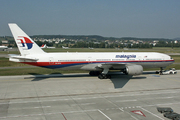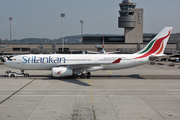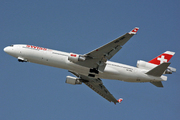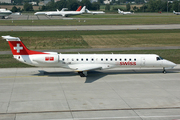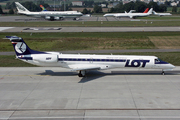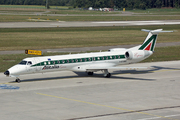Dépêches
UK Commemorates Battle of Britain Commander
Dépèche transmise le 4 novembre 2009 par PRNewswire
LONDON, November 4 /PRNewswire/ --
- Unveiling ceremony to commence with a Royal Air Force flypast of a Spitfire and a Typhoon aircraft - Speaking and unveiling party includes:- Boris Johnson, Mayor of London Terry Smith, Chairman of the Sir Keith Park Memorial Campaign Air Chief Marshal Sir Stephen Dalton, Chief of the Air Staff WWII RAF veterans Members of the Park family - VIP guests include actor Edward Fox, Battle of Britain historian Dr Stephen Bungay, Lord Tebbit, 16 RAF Veterans, many relatives of those that fought in the Battle of Britain and His Excellency Derek Leask, New Zealand High Commissioner - Supported by the Central Band of the Royal Air Force and its Fanfare Team and the Royal Air Force's Queen's Colour Squadron - Unveiling will also commemorate the c.2950 pilots from 15 countries who fought to defend Britain in 1940 and served with Sir Keith Park
A statue of Air Chief Marshal Sir Keith Park, who led the Royal Air Force (RAF) forces over London and the South East of England throughout the Battle of Britain, will today be unveiled on the Fourth Plinth in Trafalgar Square at 16:00hrs.
The statue, presented by the Sir Keith Park Memorial Campaign and supported by London Mayor Boris Johnson, will be in place for six months and a permanent memorial statue of Park will then be unveiled in Waterloo Place on the 70th anniversary of the Battle of Britain on 15 September 2010.
The unveiling ceremony will be attended by over 1,000 invited guests, alongside the General Public, including Boris Johnson, Mayor of London, Terry Smith, Chairman of the SKPMC, Air Chief Marshal Sir Stephen Dalton, Chief of the Air Staff, WWII RAF veterans and members of Sir Keith Park's family. Also in attendance will be supporters of the Sir Keith Park Memorial Campaign, including Edward Fox OBE, Dr Stephen Bungay, Flight Lieutenant John Nicol and many representatives and diplomats of the Commonwealth and other countries represented by members of 'The Few'.
The ceremony will commence at 16:00hrs with a Royal Air Force flypast of a Spitfire and a Typhoon aircraft over Trafalgar Square and speeches will be made by Terry Smith, Boris Johnson and Air Chief Marshal Sir Stephen Dalton.
A large screen in Trafalgar Square will be playing video footage of Sir Keith Park and RAF Films from noon and will then relay the ceremony through to the close of the event at approximately 16:30hrs.
Approximate running order: 15:45 Band of the Royal Air Force College, trumpeters and QCS Guard of Honour march on to Trafalgar Square 16:00 Formal unveiling ceremony commences with Spitfire and Typhoon aircraft flypast (weather permitting) with RAF salute Welcome by Terry Smith, introductory film footage, and unveiling of the memorial statue Speeches by Boris Johnson and Air Chief Marshal Sir Stephen Dalton Prayer by Chaplain-in-Chief Reverend Air Vice-Marshal Ray Pentland 16:20 Film footage shown on the big screen (music: Nimrod and Spitfire Prelude) 16:30 National Anthem
Sir Keith Park commanded 11 Group of Fighter Command - responsible for the defence of London and the South East. He therefore commanded the squadrons which bore the brunt of the Battle of Britain. The failure of Nazi Germany to defeat the RAF in 1940 is seen as Hitler's first major setback in the Second World War - and forced Germany to call off the planned invasion of Britain. This statue is a fitting memorial to Park as it will be erected in London's Trafalgar Square, in the heart of the United Kingdom's capital City which he helped to defend in 1940 and beneath Nelson's Column - a memorial to another commander (this time Naval) who likewise defended Britain from invasion 135 years earlier.
Park was a New Zealander, who fought in the First World War in the field artillery first at Gallipoli, and then the Somme where he was wounded and evacuated to England. Medically graded unfit to continue service with the artillery, Park joined the Royal Flying Corps, remaining with the air arm when it was re-formed as the Royal Air Force.
Marshal of the RAF, Lord Tedder, said of Park: "If ever any one man won the Battle of Britain, he did. I don't believe it is recognised how much this one man, with his leadership, his calm judgement and his skill, did to save not only this country, but the world."
The statue of Sir Keith Park commemorates the c.2950 pilots from 15 countries who fought to defend Britain in the Battle of Britain in 1940. Today, there are just over 105 survivors. To the best of the Sir Keith Park Memorial Campaign's knowledge the nationality breakdown of "The Few" is as follows:-
Australia 33 Belgium 29 Canada 98 Czechoslovakia 88 France 13 Ireland 10 Jamaica 1 Newfoundland 1 New Zealand 126 Poland 145 the Rhodesias 3 South Africa 25 United Kingdom 2353 United States 11
Terry Smith, Chairman of the Sir Keith Park Memorial Campaign, said:
"It is an honour to be unveiling a statue of Sir Keith Park in Trafalgar Square today. Park was pivotal in organising the defence of our country and capital city during the Battle of Britain and was a key figure in ensuring the survival of our nation. A New Zealander, Park was one of many who came from Commonwealth nations and other countries to our aid at one of Britain's most bleak times in history. As we reflect on the recent anniversary of the beginning of the Second World War, and the story of Sir Keith Park, we should remember the sacrifices made on our behalf by our own forces and by citizens from the Commonwealth and other countries in our 'Finest Hour'."
Chief of the Air Staff Air Chief Marshal Sir Stephen Dalton, commented:
'Sir Keith Park was a brave and exceptional fighter pilot, and outstanding senior officer, who never failed at any task he was given. He inspired all who worked with and for him, with his quiet gallantry, supreme personal inspiration, organisation and mental agility. He is a hero to the Royal Air Force, to this country, and to New Zealand, whose citizens have so often joined us in battle, from the World Wars through the Falklands to the present day.'
London Mayor Boris Johnson said it was an important moment:
"London owes an enormous debt to Sir Keith Park for his courage and leadership, which helped to win the Battle of Britain. Hosting a temporary memorial in Trafalgar Square in time for the 70th anniversary of this epic battle is a mark of our gratitude for the bravery and commitment this great hero showed to London and the world."
Edward Fox OBE said:
"Quality of leadership exists in varying capacities. In differing degrees it is possessed by many. The power of great leadership however belongs to only a few and was quintessentially decisive in determining the outcome against the enemy that Great Britain (which as a country was not well prepared) had to face in 1940.
"However gallant and courageous the nation's forces unquestionably were, it was great leadership which galvanised that spirit and propelled it to victory against a formidable and better-armed enemy. Such men are rare. Such a man was Sir Keith Park."
Planning permission was granted by Westminster City Council in May 2009 for a temporary statue of Park to be installed on the Fourth Plinth in Trafalgar Square. The six-month installation on the Fourth Plinth bridges a gap in the programme of contemporary artwork on the Plinth. Yinka Shonibare's 'Ship in a Bottle' will be installed in 2010, sometime after early May.
Media accreditation and enquiries
Media wishing to arrange interviews and gain access to the press stand in Trafalgar Square should register in advance with Charlotte Kirkham or Emma Thompson. Press facilities are available in Trafalgar Square from 14:00hrs.
Media materials
Photography and video footage of the Spitfire/Typhoon flypast and unveiling ceremony will be available shortly after the event at the following websites:-
http://www.gettyimages.co.uk http://www.sirkeithpark.org http://www.defencenewsimagery.mod.uk Username*: GuestUser Password*: GoldenMedal *Case-sensitive; please do not disseminate these log in details further. Available interviewees include: Terry Smith Chairman of the Sir Keith Park Memorial Campaign Air Chief Marshal Chief of the Air Staff, RAF Sir Stephen Dalton Mr Edward Fox OBE Actor and supporter of the Sir Keith Park Memorial Campaign Dr Stephen Bungay Military historian Les Johnson Sculptor Members of the Park family: Miss Leigh Park Great-great niece of Sir Keith Park Miss Laurette Cummins Great-great niece of Sir Keith Park Mr Terence Stevens-Prior Great-great nephew of Sir Keith Park Supporters of the Sir Keith Park Memorial Campaign: Mr Mark Field MP The Rt Hon the Lord Tebbit of Waltham Forest CH PC
WWII RAF veterans:
Flight Lieutenant W L B Walker (William); Pilot Officer Walker, 616 Squadron, Spitfires
A pre-war member of the RAFVR, William Walker was called to full time service in September 1939. On August 26 1940, his Spitfire was shot down in combat over Dover. He was wounded and rescued from the sea by the Navy. He spent some time in hospital with Wg Cdr Geoffrey Page, founder of the National Memorial and features in Page's memoirs. Altogether, the Squadron had seven aircraft shot down that day. After the war he went into the brewery business and was Chairman of Ind Coope. He was 96 in August 2009.
Squadron Leader K A Lawrence, DFC (Keith); 234, 603 Squadrons an 421 Flight, Spitfires
A New Zealander, Lawrence shared in the destruction of a Ju 88 on July 8 1940, 234's first victory of the war. He went on to have a number of successes during the Battle of Britain. On November 26 1940 he was shot down over Ramsgate by Bf 109s. The aircraft disintegrated but Lawrence managed to open his parachute and landed in the sea, with a broken leg and a dislocated arm. He was picked up by a minesweeper. Lawrence later served in Malta.
Wing Commander T F Neil, DFC*, AFC (Tom); Pilot Officer, DFC, 249 Squadron, Hurricanes
Tom Neil, a pre-war member of the RAFVR, flew throughout the Battle of Britain with 249. He is credited with the destruction of more than 17 enemy aircraft, the majority of which being claimed during the Battle of Britain. He went on to see further combat in Malta where command 41 Squadron. He returned to the UK to fly Spitfires over the Channel and elsewhere during 1943. Attached to the American 9th Air Force in 1944, he took part in the invasion of Normandy and remained with the USAAF until the border of Germany was reached. Later he briefly saw action in Burma.
After the war, he spent four years as a Service Test Pilot and has flown more than 100 types of aircraft. Serving for some years in the British Embassy in Washington, he returned to America as a businessman before retiring to Norfolk where he now lives writing and lecturing. Married to his wife Eileen for over 60 years, they have three sons, two of whom were in the Services and who still fly.
Wing Commander R (Bob) W Foster DFC AE RAF; Pilot Officer Foster, 605 Squadron, Hurricanes
Bob survived the September and October fighting in the Battle of Britain 1940. In combat in September he forced landed at Gatwick. He later flew from Darwin in Australia with 54 Squadron against the Japanese and scored the Squadron's first victory by destroying a Dinah. With several combat victories against the Japanese he was awarded the DFC. During the Normandy invasion he served with the Air Information Unit and was the only RAF Officer to witness the liberation of Paris. After the war Bob rejoined RAuxAF and served until its disbandment in 1957. He is Chairman of the Battle of Britain Fighter Association.
Ft Lt Hazel Gregory
Hazel joined the RAF in 1940 and served for 2 years under Sir Keith Park as a Plotting Room Operative at RAF Uxbridge - the command office for the Battle of Britain. She was subsequently commissioned in the RAF in 1942 - her promotion was recommended personally by Sir Keith. She was then posted and served for 2 years at Bletchley Park and was finally posted to the Cabinet War Rooms again where she served till the end of WW2.
Wing Commander Peter Ayerst D.F.C. (Peter turns 89 on 4th November 2009)
Peter was a World War Two Fighter Ace. He joined the RAF in 1938 and then fought in campaigns during the entire length of the war, from 1939 to 1945. Peter took part in The Battle of France, Battle of Britain, El Alamein, D Day, and Bomber Escort, deep into the heart of Germany. By February 1945, he became a Test Pilot on Spitfires at Castle Bromwich under Alex Henshaw. Peter flew every operational mark of Spitfire and Hurricane in the RAF's inventory, and flew more Mark 22's than any other Pilot. Peter is the only surviving Pilot from 73 Squadron and is the only surviving Test Pilot from Castle Bromwich. In September 1944, Peter was awarded the Distinguished Flying Cross.
Notes to Editors
1. Air Chief Marshal Sir Keith Rodney Park, GCB, KBE, MC and Bar, DFC, DCL, MA, RAF was the New Zealand born RAF Air Vice-Marshal who commanded 11 Group, Fighter Command, responsible for the air defence of London and South East England during the Battle of Britain. His inspirational leadership and tactical brilliance was central to Britain winning the battle, which in turn helped determine the outcome of the entire Second World War. Sir Keith went on to lead the air defence of Malta in 1942, subsequently reaching the rank of Air Chief Marshal in South East Asia at the end of the war. During the First World War, Sir Keith served at Gallipoli and then the Somme before becoming a pilot and shooting down 20 enemy aircraft.
2. The design by sculptor Les Johnson will be used for both the statue to be exhibited temporarily for six months on Trafalgar Square's Fourth Plinth from 4 November 2009, as well as for the permanent memorial statue which will be erected in Waterloo Place on the 70th anniversary of the Battle of Britain on 15 September 2010, Battle of Britain Day.
3. The Sir Keith Park Memorial Campaign was launched on 7 March 2008 when Battle of Britain pilots, senior serving RAF officers, a great-great niece of Sir Keith Park, politicians and many other supporters assembled in Trafalgar Square beside a full-size replica Spitfire.
4. The Campaign has received support from a broad constituency including the RAF, Battle of Britain veterans, members of the Park family and the New Zealand cricket team. It also secured the support of the leader of every New Zealand political party, including the Prime Minister and Defence Minister. In this country more than 100 MPs and a number of House of Lords members from all parties, former politicians such as Tony Benn and Lord Tebbit, as well as well-known names such as Sir Patrick Moore, Dan Snow and Edward Fox have backed the Campaign.
5. Over 10,000 people signed the various Campaign petitions.
6. Terry Smith is the Chief Executive Officer of Tullett Prebon plc and Executive Chairman of Collins Stewart plc. He has a keen interest in military history.
7. Other supporters of the Campaign include: Algy Cluff; Air Chief Marshal Sir Brian Burridge; Air Marshal Clifford Spink; Lord Lee of Trafford; Lord Selkirk; Rt Hon Lord Trefgarne; Mark Field MP; Richard Benyon MP and Hon. Nicholas Soames MP.
8. For more information, please visit our website at .
Charlotte Kirkham Emma Thompson Tel. +44(0)7989-528421 Tel. +44(0)7850-155246 [email protected] [email protected]
CONTACT: Contacts: Charlotte Kirkham, Tel. +44(0)7989-528421,, Emma Thompson, Tel. +44(0)7850-155246,
- 24/04Ibis Styles London Heathrow : l'hôtel géré par un passionné d'aviation pour les passionnés d'aviation (photos + vidéos)
- 23/04 SkyUp renouvelle son partenariat avec Wizz Air
- 23/04 Play : résultats de mars 2024
- 23/04 Les garde-côtes japonais commande trois Airbus H225 supplémentaires
- 23/04 Vueling et Make-A-Wish France signent un partenariat
- 23/04 TUI annonce ses destinations au départ de Deauville pour l'été 2024.
- 23/04 Twin Jet renforce son programme de vols sur la ligne Toulouse/Rennes
- 23/04 Norse Atlantic Airways : résultats du mois de mars 2024
- 23/04 Volotea renforce son offre entre Lille et le Maroc
- 22/04 Finnair a dévoilé son programme de vol pour les saisons hiver 2024 et été 2025
- 22/04 Qatar Airways annonce le lancement de vols à destination de Kinshasa
- 22/04 Vietnam Airlines et CAE prolongent leur accord
- 22/04 Mermoz Academy de Tours commande des Tecnam P-Mentor
- 22/04 Transavia France reçoit son 2e Airbus A320neo
- 20/04 Friedrichshafen 2024 : Blackwing présente un nouveau modèle de son BW650RG
- 20/04 Friedrichshafen 2024 : JMB Aircraft présente son Phoenix
- 19/04 Friedrichshafen 2024 : le projet "Fly To The North"
- 19/04 Friedrichshafen 2024 : Aura Aero présente pour la première fois ses trois appareils
- 19/04 Friedrichshafen 2024 : Duc Hélices présente son hélice Tiger-3
- 19/04 Friedrichshafen 2024 : Splash-in Aviation expose son Pétrel X


